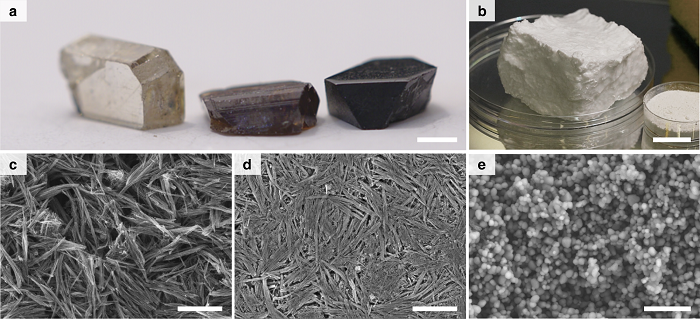This website uses cookies to ensure a better user experience.
To get more information, please read our Cookie Statement.
Tailoring thermal conduction in anatase TiO2
Our colleague Osor Slaven Barišić, in collaboration with scientists from the Physical Department of PMF in Zagreb and École Polytechnique Fédérale de Lausanne in Switzerland, has published a paper in prestigious journal Communications Physics. The authors investigated thermal conductivity and explained its strong reduction in single-crystals due to a resonant scattering of phonons on polaronic impurities. They also exploited the influence of nano-structuring effects on the heat transport properties.
Tailoring thermal conduction in anatase TiO2
Xavier Mettan, Jacim Jaćimović, Osor Slaven Barišić, Andrea Pisoni, Ivo Batistić, Endre Horváth, Samuel Brown, Lidia Rossi, Péter Szirmai, Borbála Farkas, Helmuth Berger, and László Forró, Communications Physics 2 , 123 (2019).
DOI: 10.1038/s42005-019-0224-7
Thermal conductivity (κ) plays an essential role in functional devices. In this context, one of the greatest challenges in applications is achieving a high thermoelectric figure of merit (zT=S2σ/κ) which determines the quality of the thermoelectric material. The common strategy of achieving high zT involves materials with high Seebeck coefficient (S), in which low electric conductivity (σ) may be increased by doping, while the thermal conductivity (κ) may be reduced by additional structuring of the material at meso/nano-scales in order to reduce the phonon-mean-free path. Usually, systems with high figure of merit have complex unit cells, meaning that finding appropriate stoichiometry is rather complex.
Two main results of the newly published work should be emphasized. First, a new, strong diffusion mechanism of heat due to oxygen vacancies by polaronic effects is identified in millimetre-sized single-crystals of anatase TiO2, synthesized at the EPFL. This mechanism considerably influences both the absolute value and the temperature dependence of κ. Transport measurements were conducted on a. The original theoretical modelling of polaronic impurities may be relevant for many other functional oxides, such as SrTiO3, ZnO and CaMnO3, because of a strong presence of polaronic effects in these materials as well. Furthermore, resonant scattering of phonons on polaronic defects, while significantly reducing thermal conductivity, is followed by increase in electrical conductivity (σ) due to the doping with oxygen vacancies and, consequently, it results with higher figure of merit. Second important result of the new study is an additional decrease of κ achieved by nano-structuring of the anatase. That is, a foam of anatase nanowires is grown, with a large porosity and quasi-one-dimensional size-effects dramatically hindering the propagation of heat. This results in an extremely low κ = 0.014 W/Km at room-temperature. A synthesis of anatase foam in large (commercial) quantities is demonstrated.

Anatase single-crystals, foam and nanoparticles. a Millimetre-sized single-crystal (SC) of anatase TiO2. From left to right, insulating (transparent SC) and oxygen richer insulating anatase (brown SC), hydrogen treated conducting anatase (black SC). b Photography of the as-grown TiO2 foam; the jar (bottom right) contains the TiO2 powder employed for the synthesis of nanowires and nanoparticles. c–e Scanning electron microscope micrographs of uncompressed foam, foam compressed (100 MPa) and TiO2 nanoparticles, respectively. The scale bars correspond to 1 mm in a, 20 mm in b and 1 μm in c–e
In general, alongside with simple chemical properties and abundance in nature, anatase TiO2 shows many promising properties for applications, with a wide spectrum of functionalities depending on the preparation procedure. Proposed applications range from water splitting, photovoltaics, antibacterial coatings, and memristor nanodevices with a memory of past currents. While structural and optoelectronic characteristics of anatase are well known, much less was known about its thermal properties. The new study aims to fill this gap, bringing important results that include not only the room temperature, but also low-temperature properties of single-crystal anatase with different doping levels, anatase nanowires organized into foam and nanoparticles.




